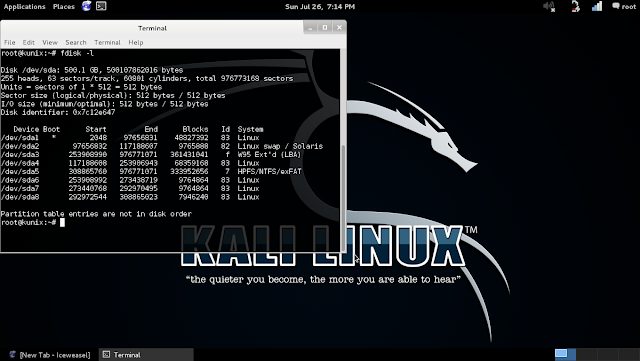

In the following step, you must select the bootloader type for your Linux distribution. If you are using Linux/BSD, go to the “Linux/BSD” tab and choose “Add New Entry” from the menu. If the boot order is not specified in the BIOS/UEFI file, use any keyboard shortcuts for a “boot order menu” (depending on your manufacturer) or boot into BIOS/UEFI and change the boot order to point to the installation file first. Insert the Kali Linux installation medium and power on the device to begin the resizing process. To do this, open a terminal and type: wget Once the download is complete, you can launch Rufus by double-clicking on the downloaded file. If you’re running another distribution of Linux, you can download the Rufus source code from the project’s website. To do this, open a terminal and type: sudo apt-get install rufus Once the installation is complete, you can launch Rufus from the Applications menu. Congratulation, you have successfully created a Kali Linux Live USB.If you’re running Kali Linux, you can install Rufus using a package manager. Restart again, and check there will be your file. umount/dev/sdXY&rebootīoot again your Kali Linux Live USB and create a folder or file. At last use, the command below to unmount the USB and reboot your system. Then you will create a configuration file where you will place all your temporary data. Here you are selecting, then creating a new section. mkdir -p /mnt/my_usb mount /dev/sdXY/mnt/my_usb echo "/union"> /mnt/my_usb/nf= The command above will give the name “Persistence” to your disk. These will recreate the partition created in Windows on Ext3. Then use these commands: dev/sdb3, dev/sdXY, mkfs.ext3 -L persistence /dev/sdXY It will show the part of the drive that you will need to see. Inside the Terminal, you will use the command: fdisk –1 When the system boots the USB, you will open the Terminal inside. Will navigate to Boot section and will make the USB at top. Note: To make your system Boot USB, you enter your BIOS by pressing F12 (may vary on other systems) while your system starts. Your system should boot the USB drive that will be like Live USB Persistence. Now you will reboot your system while your USB drive is connected. Configure Persistence of Kali Linux Live USB

Once all the properties are selected, click on OK. Create new partition- minitool partition wizard


 0 kommentar(er)
0 kommentar(er)
